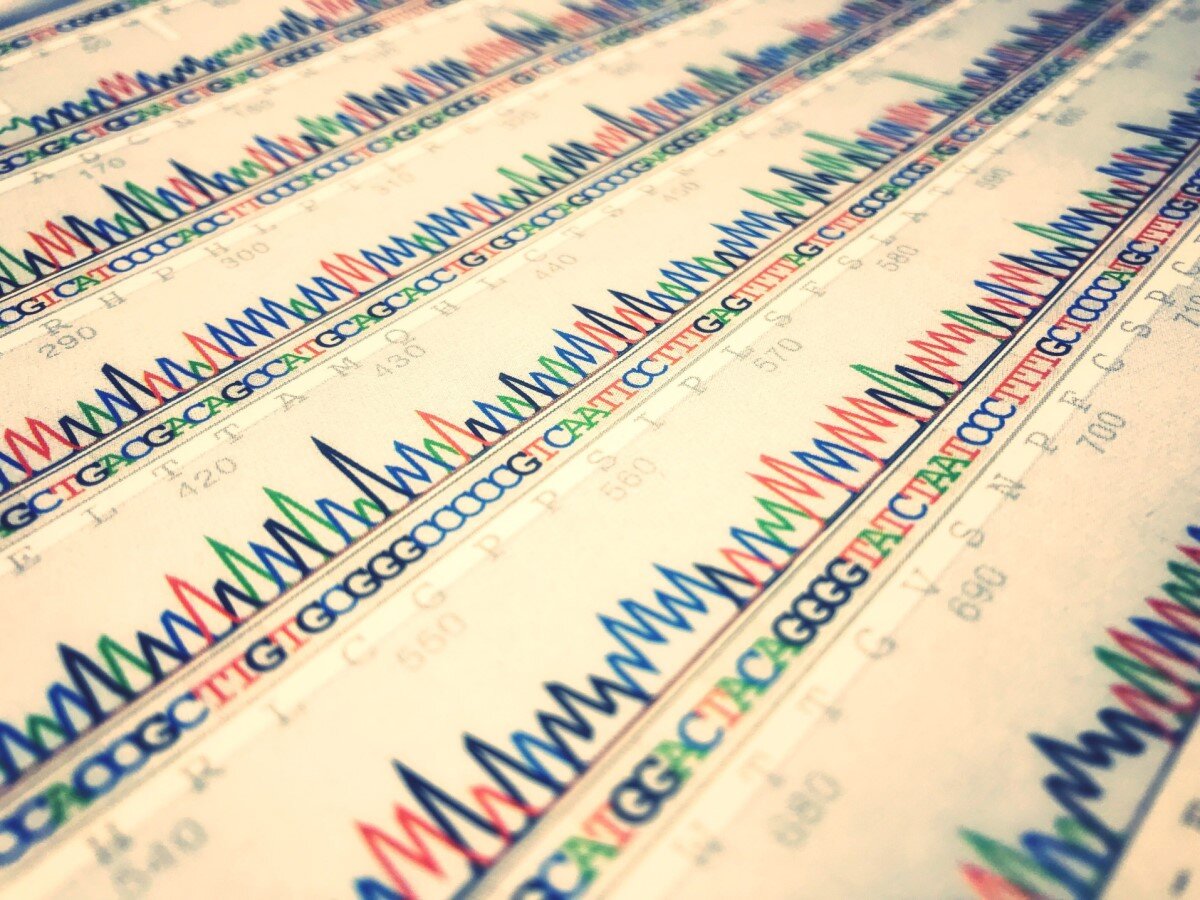From poop to pus - the discovery of DNA
Photo: @kintaronatto
While the discovery of the first nucleotide base was almost accidental and its significance wasn’t realised until much later, the isolation and naming of the other bases was much more systematic.
Unfortunately, our story now takes us from bird poop to an equally disgusting substance – pus - and from there to that most glamorous of locations: the slaughterhouse.
The chemical we now know and love as DNA was first discovered in the 1860s by Johannes Friedrich Miescher – a young Swiss man whose budding medical career was cut short by a dose of typhoid that affected his hearing.
Johannes Friedrich Miescher. Public domain.
Switching to science, he headed to Germany to the lab of Felix Hoppe-Seyler, a biochemist whose heart was set on figuring out the chemical components in white blood cells. And the source of those cells? Pus-soaked bandages from a local clinic, supposedly peeled off the infected wounds of battle-scarred veterans according to some stories.
Apparently, Miescher even had to sniff the dressings to make sure he was getting nice fresh pus containing more whole white cells, rather than fetid slime. Lovely.
After treating the bandages with warm alcohol, salt and acid, Miescher was left with a strange grey sludgy substance that he initially took to be protein.
But this curious chemical didn’t behave like any other protein known to science as it seemed to vanish when alkali was added, unlike proteins. And it was very rich in phosphorous, which wasn’t a known component of proteins either.
For want of a better name, Miescher named the substance ‘nuclein’, because it seemed to come from the nucleus – the round, kernel-like structure in the heart of every cell. And while nobody uses the term nuclein today, it echoes in the technical name for DNA – deoxyribonucleic acid.
Although Miescher was convinced that his nuclein was an important new discovery and continued to work on purifying and studying his mysterious molecule, few others were convinced.
Being a student, and perhaps lacking the skills or confidence to communicate his findings, Miescher took his time publishing the results of his experiments preferring to discuss them in letters to friends rather than the scientific literature.
And even once he did put together a paper in 1869 and sent it to Hoppe-Seyler, his boss was sceptical that a newbie scientist could make such a novel discovery.
Hoppe-Seyler set about repeating all of Miescher’s experiments himself, only allowing Miescher’s paper to be published after his own, noting that its publication was delayed due to “several unforeseen circumstances”. Cool boss.
So, nuclein was real – but what exactly was it made of?
Albrecht Kossel. Public domain.
It fell to Miescher’s colleague, Albrecht Kossel, to find out the composition of this mysterious molecule. Kossel was a qualified doctor but loved chemistry so much that after completing his medical degree in 1877, he worked as a research assistant in Hoppe-Seyler’s lab rather than take up a doctoring job.
Kossel focused his research on investigating the building blocks of nuclein – the chemicals we today call nucleotides. But rather than obtaining his starting material from pussy bandages, as Miescher had done, he opted for a slightly less grim source: animal organs.
He formed a relationship with a local slaughterhouse, who supplied him with a steady stream of body parts for his work. Although extracting nucleotides sounds like a simple experiment and it’s the sort of thing an undergraduate can do in an afternoon with a handy kit nowadays, this was not easy work.
The extraction and isolation took 100 kilograms of pancreas from 30 cows, 200 litres of acid, and years of analysis to work out what they had isolated.
Eventually, the graft paid off. In 1885, Kossel had isolated two nucleotide bases. One of them turned out to be guanine, which already had a name. Tick!
Kossel chose the name adenine for his other nucleotide in reference to the pancreatic glands he extracted it from, using the Greek name for gland “aden” and the suffix '-ine,' which means both "derived from" and "containing nitrogen”.
A few years later, the slaughterhouse gifted Kossel with a different shipment of organs: 'gullet sweetbreads' as butchers know them. That's the thymus to you and me – a special gland in the chest that pumps out immune cells called T cells.
You can probably guess that this is where Kossel and his student Albert Neumann found thymine in 1893. But it's also where he discovered cytosine in 1894, which is rather boringly named after the Greek word for cell – ‘cyto.' Perhaps he just ran out of inspiration by that stage?
Still, we shouldn’t complain too much, because luckily for us future geneticists, Kossel chose names that all started with different letters, making writing and interpreting the genetic alphabet straightforward.
While the letters A,C,T and G are synonymous with the genetic code of life today, Kossel failed to recognize the significance of the nucleotide bases at the time.
Like many researchers at the time and for many decades to come, he believed that proteins were much more important than DNA. After all, given that there were 20 different amino acids and just four nucleotide bases, how could DNA possibly carry all the information required for life?
If you want to know how that conundrum got sorted out, have a listen to episode 10 from our first series, where we talk about Martha Chase and Alfred Hershey’s infamous blender experiments, and episode 16, discussing how the triplet DNA code was cracked.
None the less, Kossler’s work provided the necessary groundwork for deciphering the genetic code and unravelling the structure of DNA decades later. And he was awarded the Nobel Prize for physiology or medicine in 1910 – recognition that hopefully made all the pancreas-squishing worth it.
References and further reading:






